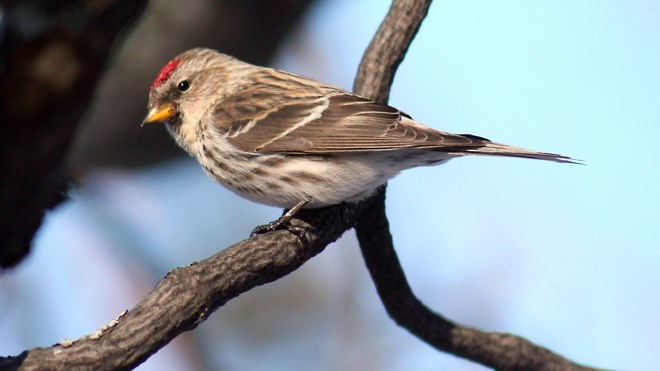The latter portion of February and early March can be turbulent times, particularly with the likes of the snow storm we just experienced.
Feeders become particularly important.
At one of the recent club meetings, it became apparent the bird feeders people were maintaining were getting some visitors. There were common themes reported throughout the various locations within the region. Whether feeder operators were in the Valley, Dowling, Greater Sudbury, Lively, Falconbridge or elsewhere, the use of Nyger seeds and black oil seeds were attracting the Big Winter Three.
Well, big in numbers, but small in stature. These three species belong in the finch group and it would be useful to do a small description of each if the reader is interested in learning the different species. These three species can be seen in mixed flocks, so it can be fun trying to figure out if you have more than one species in your backyard.
Recently, the pine siskin has made a strong appearance. This is a small finch of almost non-descript character, unless you look very carefully.
Some people use the label “LBJ” or “little brown job” to describe the species. Overall, it is spotted and streaked brown with a small pointed finch-like beak. The males stand out a little better if you look at the wings and tail base.
When folded, there may be a yellow band present and when the wing is opened you can view a beautiful yellow streak running down the base of the primaries and secondaries that strongly stands out against the brown background of the rest of the feathers. At a recent trip to Killarney, birder Rodney found several flocks of more than 50 birds coming to the local feeders.
The second species is a more colourful finch called the common redpoll. They are about the same size as the siskin, but appear lighter and a little more on the plump side. The male stands out with bright red to pink colour on the chest and crown of the head with a light belly and light brown streaked back.
Female redpolls have a red cap. The term “poll” means top of the head. These birds are gregarious and visits of 30 or more birds are not unusual. There are tales of feeders getting emptied daily by regular visitors to the backyard.
The third species can be a surprise to the feeder watcher. In summer, the bright yellow plumage and black cap of the male American goldfinch stands out as an attractive bird locally. Feeding on mauve thistle flowers, the yellow is a strong contrast.
In winter, however, they have moulted into a drab olive green to light beige body plumage and can be easily overlooked as a goldfinch. The wing is black and has a couple of white wing bars that always help as a field mark.
In good years American goldfinches can be seen in large flocks at feeders, but in contrast bad years may reveal only single individuals.
Take the time to look carefully at the flocks that come to your feeder. You might be pleasantly surprised this year to get all three species. Oh, and did I tell you about the rare gray-crowned rosy finch …
Chris Blomme is an executive member of the Sudbury Ornithological Society and works with animals at Laurentian University. Have a question for Chris? Send it to [email protected].
Join Sudbury.com+
- Messages
- Post a Listing
- Your Listings
- Your Profile
- Your Subscriptions
- Your Likes
- Your Business
- Support Local News
- Payment History
Sudbury.com+ members
Already a +member?
Not a +member?
Sign up for a Sudbury.com+ account for instant access to upcoming contests, local offers, auctions and so much more.
